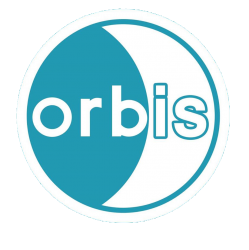1. Name and Domicile
The official name of the organization is Orbis – Humanistisen tiedekunnan ja teologisen tiedekunnan kansainväliset opiskelijat ry. The unofficial English name used for the organization is Orbis – International Students of the Faculty of Arts and the Faculty of Theology or in the abbreviated form: Orbis. The domicile of the organization is Helsinki.
2. Language
The official language of the organization is Finnish. Documentation and communication will also be in English and upon request Swedish.
3. Purpose and Form of Action
The purpose of the organization is to further the integration of international students of the University of Helsinki at the Faculty of Arts and the Faculty of Theology in general, and in the University and Finland as a whole. This is seen as the combination of academic, political, economic and social integration of the international student population through student advocacy and organization of opportunities that bring internationals and their affairs closer to Finns. In addition, the organization sees that the integration of international students will benefit Finnish students, the university and society as well as the international students themselves. The organization also aims to provide Finnish students with the opportunity to familiarize themselves with international opportunities within their studies.
To reach its purpose, the organization will be active in the following areas:
- Introducing the new international students to student life
- Providing opportunities for internationals and Finns alike to meet and network
- Promoting and protecting international interests especially within the faculties, but also more generally at the university and Finland
- Keeping international and Finnish students informed about international issues at the Faculties, university and Finland.
4. Members
All current students, including Bachelor, Master’s and Doctoral students, as well as exchange students at the Faculty of Arts and the Faculty of Theology of the University of Helsinki, who accept the purpose and rules of the organization, are eligible to become members of the organization. The membership register is handled by the Board. The Board also has the right to accept students outside the faculties as members, if it so wishes. All members have the right to vote at elections and access events and information organized and provided by the organization. All members have the right to relinquish their membership at any time by informing the Board or the chair in writing. A member can also relinquish their membership by having it recorded in the minutes of a meeting of the organization.
5. Fund-raising
To support its activities, the organization has the right to collect a membership fee, entrance fee for events, apply for grants, accept gifts and organize lotteries or sales as well as collect sponsorship.
6. The Board
The organization has a board of at least three (chairman, secretary and treasurer) and no more than 15 members. Additional roles (such as vice chairman) can be appointed as board members if deemed necessary.
6.1. The Board conducts the activities of the organization. Decisions at board meeting are reached by a majority vote. Each board member has 1 vote. If there is a draw, the Chair’s vote decides.
6.2. The Board will hold meetings when needed and inform the organizations members whenever one is held.
6.3. Board meetings are open to all members, unless the Board deems matters discussed as sensitive, secret or private. If the Board were to keep a closed meeting, a majority decision by present members to do so is required. These cases may include, but are not limited to
- Discussion about possible rewards for active members
- Discussion that includes board members’ private matters
6.4. Joining a board meeting through mail or computer-mediated communication is allowed but should only be used when necessary. At least half? of the Board must be physically present at any meeting for it to be legal and competent.
6.5. The minutes of meetings will be provided electronically to all members. Secret or sensitive information will be taken out from published minutes, but information will be made available to relevant parties in other ways.
7. Persons signing for the organization
The chair signs for the organization alone or the vice chair, secretary, treasurer or a person authorized by the Board two together.
8. Term
The term of the Board as well as the financial year are based on the calendar year: starting on January 1st and ending on the 31st of December of the same year.
9. Auditor and vice auditor
The auditor and vice auditor are chosen in the spring general meeting and their term will be the following calendar year.
10. General meetings
The highest decision-making power is with the general meetings (GM), organized at least twice a year, once in the autumn and once in the spring. GMs are brought to the attention of the organization’s members at least 14 days in advance through the organization’s official Facebook page and/or relevant mailing lists. The agenda of the meeting should be posted a minimum two days before the time of the meeting on relevant mailing lists and/or the official Facebook page. If the Board or general meeting so decides, it is possible to participate in the meeting via mail or computer-mediated communication before or during the meeting. Each student member has one vote, the winning opinion is the one that received at least half of the votes. In case of a draw, a lottery decides.
10.1. The autumn semester GM is held every year between the beginning of November and the end of December. The autumn GM holds an election where the auditor, vice auditor and the Board of the organization for the next calendar year are elected. Only those with student membership status can run. The election for the Chair will be held first, followed by the election of the rest of the Board members (minimum secretary and treasurer). Next, the auditor and vice auditor will be elected. If there are more candidates than positions, or more than one candidate applies for a position, the candidate(s) with the most votes is (are) chosen. In the case of a draw, a lottery will be conducted.
During the autumn general meeting, the plan of action and budget for the following year (prepared by the Board) is decided on. These documents have to be available for the organization’s members to read at least 14 days before the meeting. Other matters of importance can also be discussed.
10.2. After the autumn GM, the new board will organize itself with the initiative of the elected chair.
10.3. The spring semester GM is held every year between the beginning of January and the end of March. At the spring GM:
- It is decided whether to collect a membership fee and the size of said fee
- The previous Board presents the Annual Report and the financial statement. These documents have to be available for the organization’s members to read at 14 days before the meeting.
- The auditors present the results of the audit. This document has to be available for the organization’s members to read at least 14 days before the meeting.
- A decision is made about accepting the Annual Report and the financial statement and granting freedom of responsibility to the previous board and other relevant parties.
- The newly elected Board presents their Plan of Action for the coming year (based on the plan and budget produced by the previous board). This document has to be available for the organization’s members to read at least 14 days before the meeting.
- In addition, other matters of importance can also be discussed.
10.4. Rules of the organization can only be changed with a majority vote of 3/4, the voters being all student members of the organization who are present at the proposed meeting. Potential changes to the rules must be communicated to the organization’s members at least 14 days before a general meeting. The proposed rule changes will be discussed and approved with possible changes at a GM. If a member would like to propose a rule change this should be communicated to the Board 21 days before a GM.
10.5. An extra general meeting (EGM) can be called by the Board if the Board considers it necessary to discuss issues that require the attention of the organization’s members. Information about an EGM must be communicated to the members at least 14 days before the meeting. An EGM will also be held if a general meeting so decides or if it is called for by by at least 10 members of the organization to deal with a matter they have announced. The demand for an EGM must be presented to the Board in writing and upon receiving the demand the Board must arrange the EGM without delay. An EGM also has the power to make binding decisions, provided these rules are followed.
11. Dismantling the organization
To be able to dismantle the organization, there must be two meetings at least a month apart where the student members of the organization vote on whether to dismantle the organization. Such plans have to be communicated to the members at least 14 days before the meetings. Any resources, that remain after such a dismantling, must be used in a manner following the purpose of the organization as decided by the General Meeting that decides to dismantle the organization. If the organization is ordered to be dismantled the resources will be used for the same purpose.

